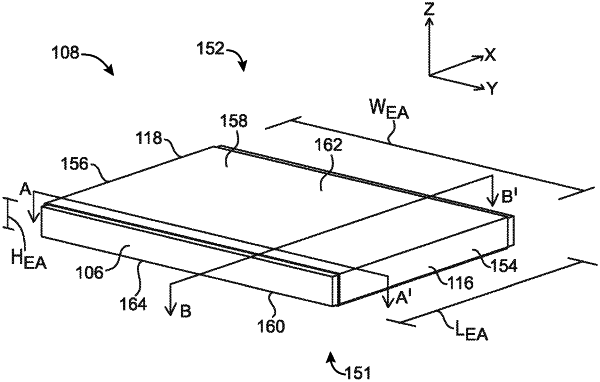| CPC H01M 50/403 (2021.01) [H01M 50/204 (2021.01); H01M 50/289 (2021.01)] | 25 Claims |

|
1. A method for manufacturing a structure comprising an electrode assembly and first and second endplates, the electrode assembly comprising an electrically insulating material, wherein
the electrode assembly comprises a population of unit cells stacked in series in a stacking direction, opposing first and second longitudinal end surfaces separated along the stacking direction, and the first and second endplates are separated in the stacking direction and overlie the first and second longitudinal end surfaces, wherein (i) each unit cell comprises an electrode structure, a counter-electrode structure, and an electrically insulating separator between the electrode and counter-electrode structures, (ii) the electrode structures, counter-electrode structures and electrically insulating separators within each unit cell have opposing first and second vertical end surfaces separated in a vertical direction, (iii) the vertical direction is orthogonal to the stacking direction, (iv) the first and second endplates each comprise vertical thicknesses tEP of cross-sectional areas in planes orthogonal to the stacking direction, wherein first vertical thicknesses tEP1 of first cross-sectional areas of each of the first and second endplates in inner regions of the respective first and second endplates that are adjacent the stacked series of unit cells, are greater than second vertical thicknesses tEP2 of second cross-sectional areas in outer regions of the respective first and second endplates that are external to the respective inner regions in the stacking direction, and each of the first and second endplates have respective maximum vertical thicknesses tEPMAX at cross-sectional areas in the plane orthogonal to the stacking direction having the greatest vertical thicknesses for each endplate, and (v) the first and second endplates comprise first and second vertical end surface regions coinciding with the respective maximum vertical thicknesses tEPMAX, the first and second vertical end surface regions being on opposing first and second vertical sides of the first and second endplates,
the method comprising:
(a) positioning a stencil comprising a stencil frame defining a stencil aperture over the first and second endplates such that the stencil frame covers at least a portion of a periphery of the electrode assembly, and first vertical end surfaces of any of the electrode and counter-electrode structure(s) of the members of the unit cell population are exposed through the stencil aperture, wherein the stencil is positioned over the first and second endplates such that a top surface of the stencil frame does not exceed the first vertical end surface regions of the first and second endplates that are on a same vertical side of the electrode assembly as the top surface of the stencil frame, and
(b) applying a porous electrically insulating material through the stencil aperture to at least partly cover the first vertical end surfaces of the electrode or the counter-electrode structure(s) of the members of the unit cell population.
|